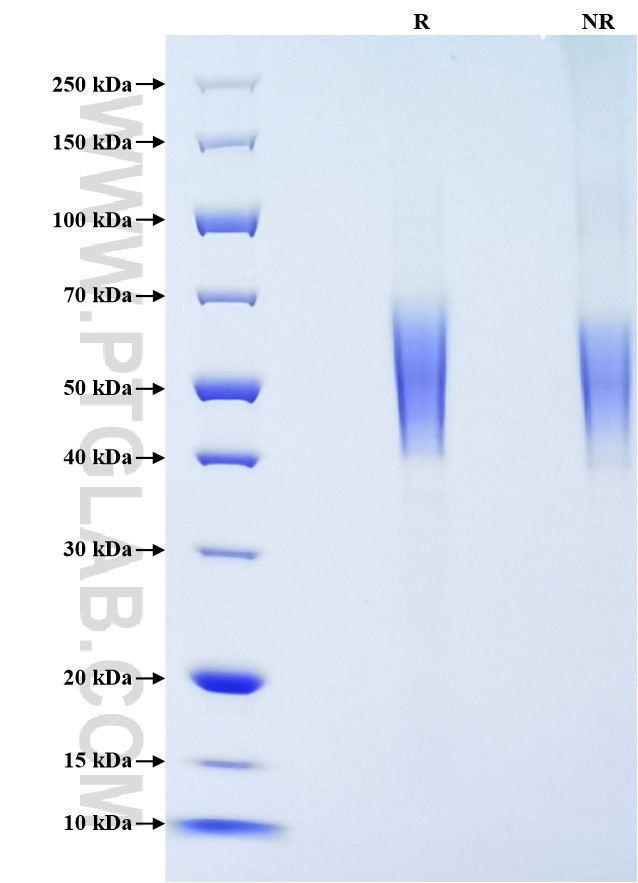Recombinant Human B7-H4 protein (Myc Tag, His Tag)
ED50
/
Species
Human
Purity
>90 %, SDS-PAGE
GeneID
79679
Accession
Q7Z7D3-1
验证数据展示
Technical Specifications
| Purity | >90 %, SDS-PAGE |
| Endotoxin Level | <1.0 EU/μg protein, LAL method |
| Biological Activity |
Not tested |
| Source | HEK293-derived Human B7-H4 protein Phe29-Ala258 (Accession# Q7Z7D3-1) with a Myc tag, His tag at the C-terminus. |
| Predicted Molecular Mass | 30.3 kDa |
| SDS-PAGE | 40-70 kDa, reducing (R) conditions |
| Formulation | Lyophilized from sterile PBS, pH 7.4. Normally 5% trehalose and 5% mannitol are added as protectants before lyophilization. |
| Reconstitution | Briefly centrifuge the tube before opening. Reconstitute at 0.1-0.5 mg/mL in sterile water. |
| Storage |
It is recommended that the protein be aliquoted for optimal storage. Avoid repeated freeze-thaw cycles.
|
| Shipping | The product is shipped at ambient temperature. Upon receipt, store it immediately at the recommended temperature. |
Background
B7‑H4, also named VTCN1, B7X, or B7S1, is a 282 amino acid protein, which contains 2 immunoglobulin-like domains and belongs to the immunoglobulin superfamily. B7‑H4 negatively regulates T-cell mediated immune response by inhibiting T-cell activation, proliferation, cytokine production and development of cytotoxicity. B7‑H4 is a single-pass type I membrane protein, which is over-expressed in breast, ovarian, endometrial, renal cell and non-small-cell lung cancers. B7-H4 is up-regulated on the surface of cancer cells and immunosuppressive tumor-associated macrophages (TAMs) in a variety of human cancers.
References:
1. Wang JY, et al. (2020). Cell Immunol. 347:104008. 2. Yu J, et al. (2024). Cell. 187 (17): 4713-4732.e19. 3. Smith JB, et al. (2014). Gynecol Oncol. 34(1):181-189. 4. Tringler B, et al. (2006). Gynecol Oncol.100(1):44-52. 5. Daha N A, et al. (2012). Ann Rheum Dis. 71(4): 567–571.
